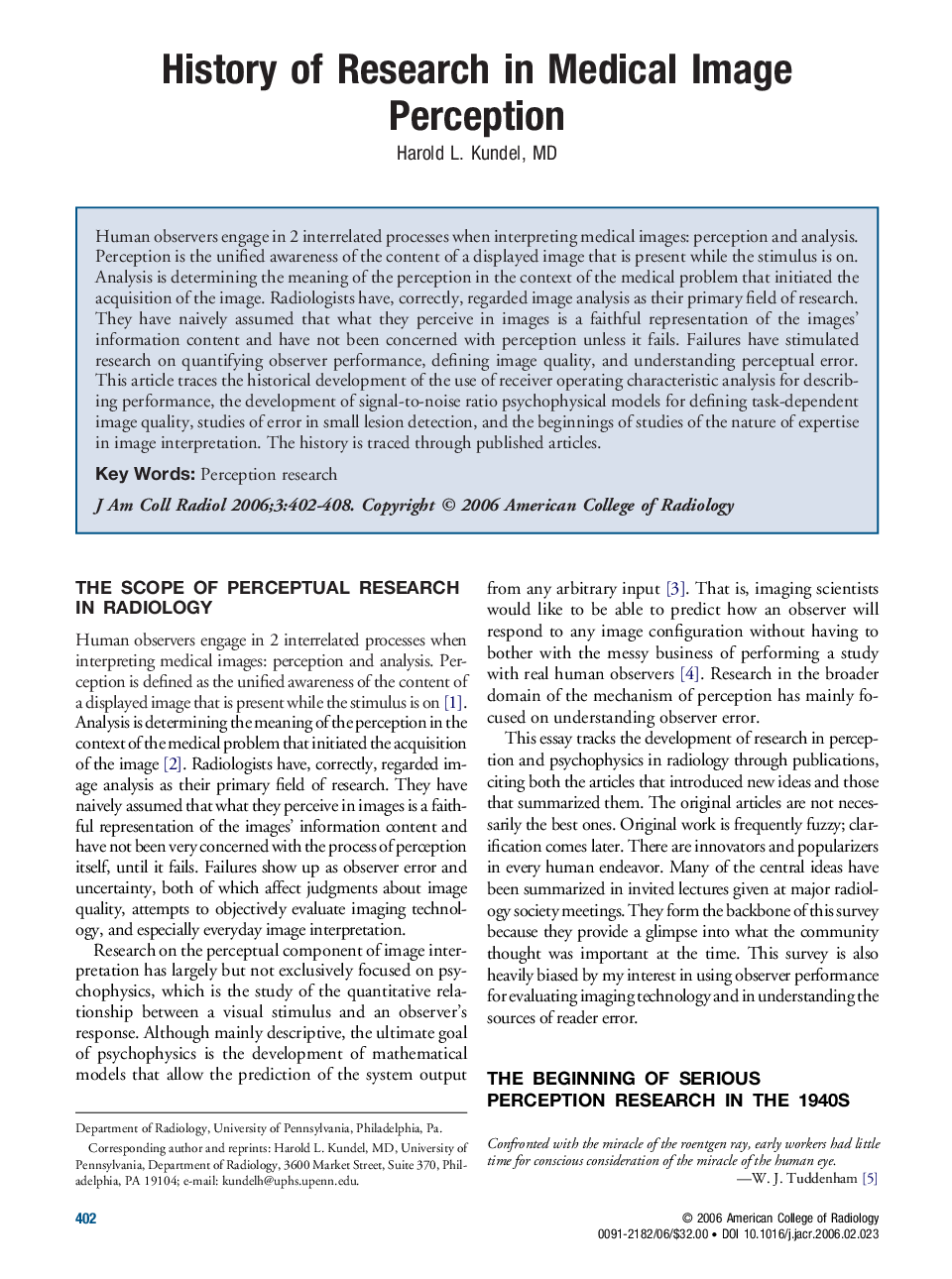| Article ID | Journal | Published Year | Pages | File Type |
|---|---|---|---|---|
| 4232646 | Journal of the American College of Radiology | 2006 | 7 Pages |
Abstract
Human observers engage in 2 interrelated processes when interpreting medical images: perception and analysis. Perception is the unified awareness of the content of a displayed image that is present while the stimulus is on. Analysis is determining the meaning of the perception in the context of the medical problem that initiated the acquisition of the image. Radiologists have, correctly, regarded image analysis as their primary field of research. They have naively assumed that what they perceive in images is a faithful representation of the images' information content and have not been concerned with perception unless it fails. Failures have stimulated research on quantifying observer performance, defining image quality, and understanding perceptual error. This article traces the historical development of the use of receiver operating characteristic analysis for describing performance, the development of signal-to-noise ratio psychophysical models for defining task-dependent image quality, studies of error in small lesion detection, and the beginnings of studies of the nature of expertise in image interpretation. The history is traced through published articles.
Related Topics
Health Sciences
Medicine and Dentistry
Radiology and Imaging
Authors
Harold L. MD,
